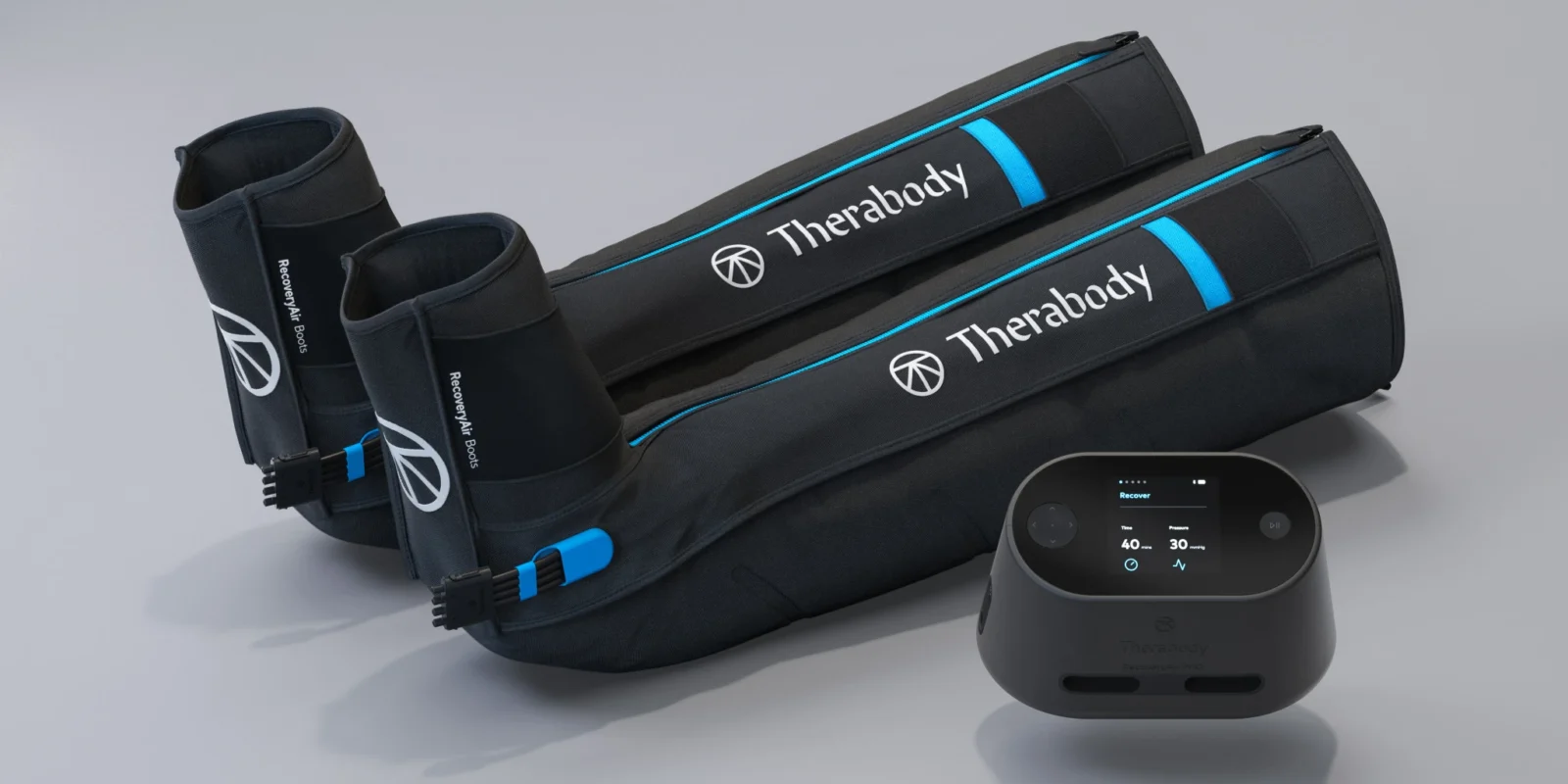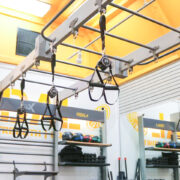Product of the Week: Therabody RecoveryAir Pro

All products featured on Athletech News are independently selected by our editors. However, when you buy something through our retail links, we may earn an affiliate commission.
The boots boast improved circulation and lymphatic drainage to improve recovery
Recovery is all the rage right now, and compression boots are no exception. The Therabody RecoveryAir Pro boots are designed to improve circulation and provide lymphatic drainage to speed up recovery and reduce muscle fatigue. With many boots on the market, how do the RecoveryAir Pro boots stack up?
Pros
The control device has simple navigational buttons that are easy to follow to customize your experience. The boots also have different modes, like recovery, warm-up, isolation, interval, and pro. Users can select a duration from 10 minutes to 90 minutes (or continual) and then pressures that range from 20 to 100 mmHg. The control device is also sleek and well-designed, so it blends into different design environments.
The four chambers of the boot were extremely effective, particularly with my feet. As a runner, my feet are often neglected, but the intense pressure and hold/release definitely reduced muscle fatigue. The boots apply graded pressure to the lower limbs, with gradual pressure from the feet to the groin. RecoveryAir also uses non-porous medical-grade material with internal overlapping chambers to prevent the boots from becoming smelly.
Apart from the physical benefits, it’s also nice to have a forced slowdown in the middle of one’s day. The physical act of sitting, setting a timer, and using the boots provides a nice respite for busy users. The Therabody “Fast Flush” Technology, however, allows the boots to inflate or deflate in just 60 seconds. Users can also control the pressure from the Therabody app from mobile devices.
Cons
The control device and the boots are not the easiest to lug around; you need a side table and a good chair (hopefully one that reclines) to effectively use the boots to their fullest extent.
It’s no secret that compression boots are expensive (around $1300), so taking them for a test run before fully investing is likely best. Similarly, ensuring that you can dedicate the time daily to the boots is important for long-term effect, particularly when training for a race.
Overall, the boots are a great investment if you train frequently or experience delayed onset muscle soreness. While the boots aren’t cheap, if you’re hoping to invest in the best compression boots, look no further.




